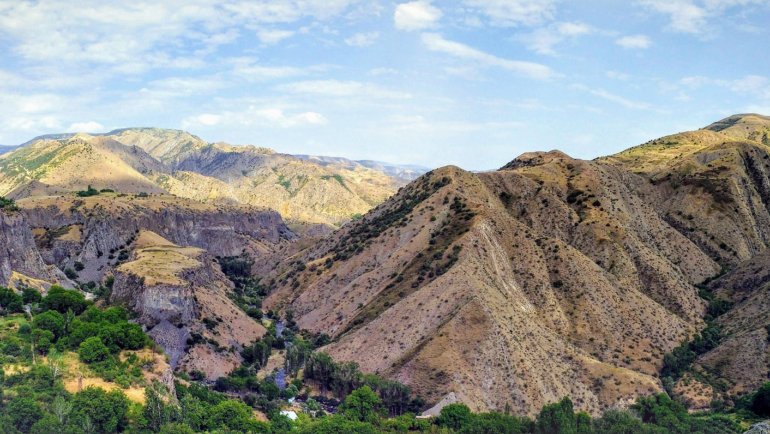Australia’s fauna is incredibly diverse, with many of its animal species being endemic. Around 46% of birds, 69% of mammals, 94% of amphibians, and 93% of reptiles found on the continent are unique to Australia. This high endemism is attributed to Australia’s long history of geographic isolation, tectonic stability, and its distinctive pattern of climate change, affecting both the soil and flora.
Some iconic Australian animals include kangaroos, wallabies, koalas, echidnas, platypuses, and various marsupials. Australia has many venomous and dangerous species, including spiders, snakes, and crocodiles.
Here are 12 examples of the most iconic wild animals in Australia:
1. Kangaroo

- Scientific name: family Macropodidae
- Type of animal: Mammal
- Where found in the country: Within the rugged landscape of South Australia’s Flinders Ranges and beside one of the world’s tallest tree forests in Pemberton, in Western Australia’s southwest.
- Conservation status: Least Concern
The kangaroo is recognized as the national animal of Australia. It was included in the nation’s coat of arms in 1908 due to its unique association with the country’s natural heritage and cultural identity.
Kangaroos belong to the family Macropopidae, a common term used to describe the largest animals from this family. This includes the red kangaroo, western grey kangaroo, eastern grey kangaroo, and antilopine kangaroo.
They have large, powerful hind legs adapted for leaping and a long, muscular tail for balance. Unlike most mammals, kangaroos have specialized teeth to facilitate their grazing habits. Their molars chop and grind the grass while their incisors can crop grass close to the ground.
★ Did you know? Female kangaroos have a pouch called the marsupium, which they carry their young to help them complete postnatal development.
2. Laughing Kookaburra

- Scientific name: Dacelo novaeguineae
- Type of animal: Bird
- Where found in the country: Eastern mainland Australia
- Conservation status: Least Concern
The laughing kookaburra is a large, robust kingfisher with a distinct eye stripe and a whitish head. Both males and females have similar plumage. The underparts are cream-white with a barred rufous and black tail. The upper parts are mostly dark brown, though you will notice a mottled light-blue patch on the wing coverts.
A kookaburra family establishes a territory to keep other kookaburra birds off the unit. They are very territorial, even to their own species. Despite being territorial, they are very social birds. Once they form a territory, they vocalize together to make others aware that they have claimed the territory.
★ Did you know? As their name suggests, laughing kookaburras have a unique laugh, often delivered by several birds simultaneously.
3. Numbat

- Scientific name: Myrmecobius fasciatus
- Type of animal: Mammal
- Where found in the country: Southwestern corner of Western Australia, including areas such as Dryandra Woodland, Perup Nature Reserve, and the Boyagin and Tutanning Nature Reserves.
- Conservation status: Endangered
The numbat, scientifically known as Myrmecobius fasciatus, is a small marsupial that feeds primarily on termites. It is also referred to as the noombat or walpurti. It has a long, pointed snout and a long bushy tail. Numbat is diurnal and spends most of its time foraging for termites, making up most of its diet.
This insectivorous animal is active during the day and was once found throughout southern Australia. However, due to habitat loss and other factors, it now only exists in a few small colonies in Western Australia, making it an endangered species.
Fortunately, conservation programs have been implemented to protect and preserve the numbat population, including reintroduction efforts in fenced reserves in South Australia and New South Wales. The numbat is significant to Western Australia, serving as its faunal emblem.
★ Did you know? Female numbats use their bodies to block the entrance of their dens while their young are inside. This behavior is an important adaptation to protect their young from predators such as snakes, birds of prey, and other small carnivores.
4. Pellucid Hawk Moth
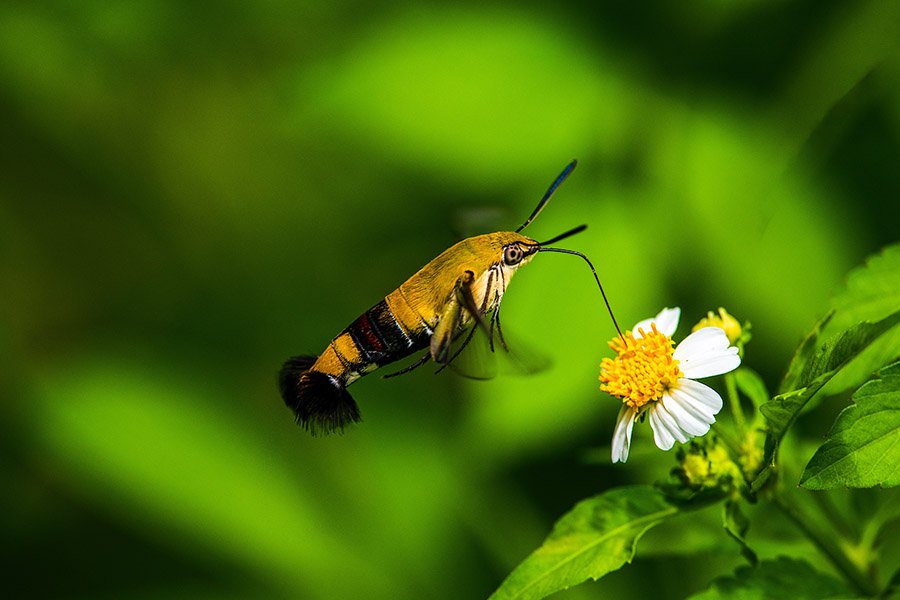
- Scientific name: Cephonodes hylas
- Type of animal: Insect
- Where found in the country: Throughout mainland Australia, as well as in Tasmania
- Conservation status: Least Concern
The pellucid hawk moth is a species of moth found in many parts of the world, including Africa, Asia, and Australia. It’s also commonly known as the coffee hawk-moth, or bee hawk-moth.
It has transparent wings and a stout body, like a bumblebee.
It typically has a 45-73 mm wingspan, with very narrow and black marginal borders. The color of its abdomen varies from yellow to green, with the nominate subspecies having bright reddish third and fourth abdominal segments.
★ Did you know? The pellucid hawk moth is known for its remarkable flying abilities, which enable it to hover in mid-air while feeding on nectar from flowers.
5. Tasmanian Devil
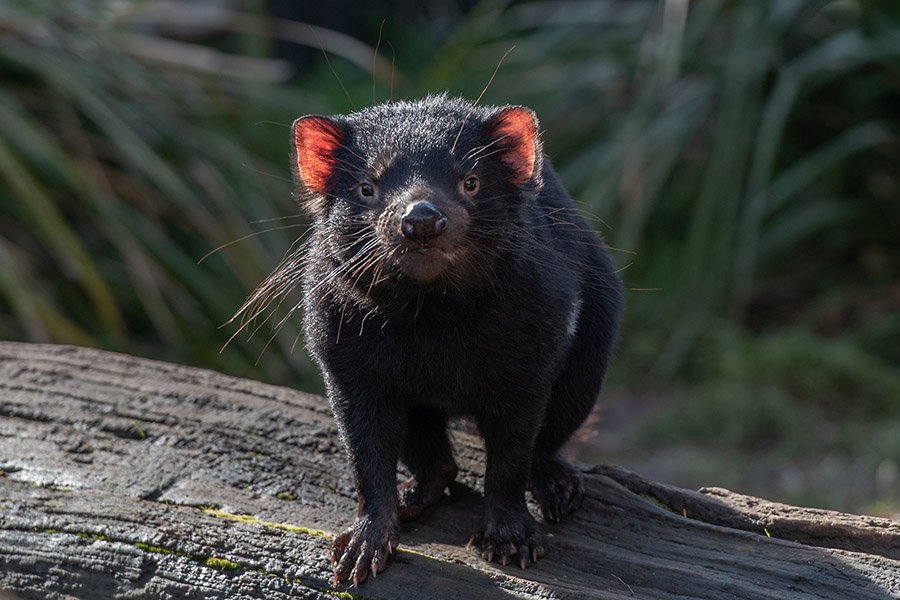
- Scientific name: Sarcophilus harrisii
- Type of animal: Mammal
- Where found in the country: The island state of Tasmania
- Conservation status: Endangered
The Tasmanian devil, a carnivorous marsupial belonging to the family Dasyuridae, is commonly found on the island state of Tasmania. It’s related to quolls and distantly related to thylacine. However, a small breeding population has been reintroduced to New South Wales in mainland Australia. With a body size similar to that of a small dog, the Tasmanian devil has become the world’s largest carnivorous marsupial after the thylacine went extinct in 1936.
★ Did you know? Tasmanian devils deliver the strongest bites per body mass of any mammal worldwide.
6. Salty Water Crocodile
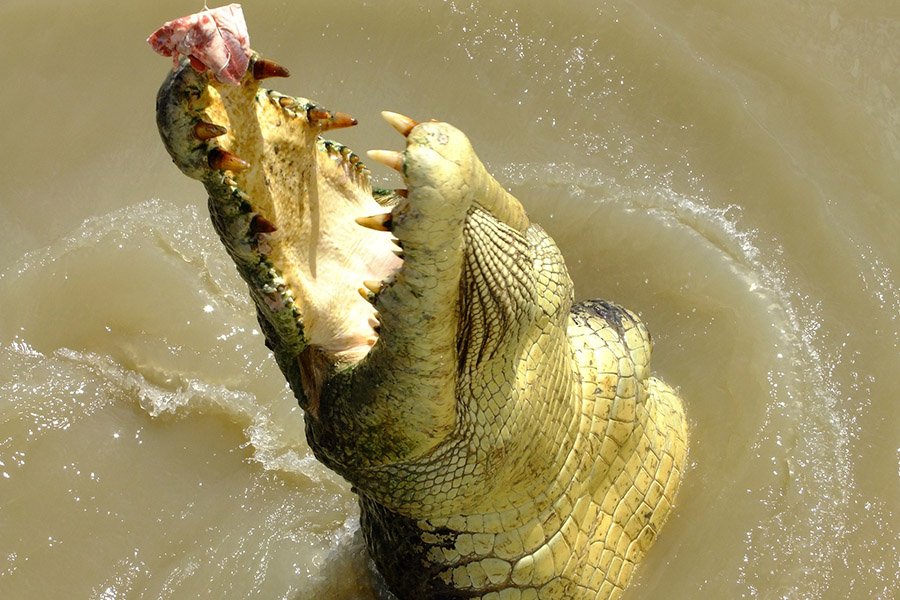
- Scientific name: Crocodylus porosus
- Type of animal: Reptile
- Where found in the country: Northern Territory, Queensland, and Western Australia. They inhabit both saltwater and freshwater environments, including rivers, estuaries, and coastal areas.
- Conservation status: Least Concern
The saltwater crocodile, also known as Crocodylus porosus, is a type of crocodilian found in saltwater habitats, brackish wetlands, and freshwater rivers. This species is recognized as the largest living reptile.
Adult males can reach lengths of up to 6 meters (20 feet) and weigh between 1,000-1,300 kg (2,200-2,900 lbs), although they rarely exceed 6.3 meters (21 feet). Females, on the other hand, are significantly smaller, with lengths that rarely exceed 3 meters (10 feet).
The saltwater crocodile is known by several names, including estuarine crocodile, marine crocodile, Indo-Pacific crocodile, sea crocodile, and informally, as the saltie.
★ Did you know? Saltwater crocodiles do not have sweat glands and cannot sweat to regulate their body temperature. Instead, they thermoregulate by basking in the sun or lying in still water to allow cool air to circulate their skin. They may also pant with their mouth open, which helps dissipate heat by increasing evaporation from moist surfaces.
7. Australian Southern Cassowary
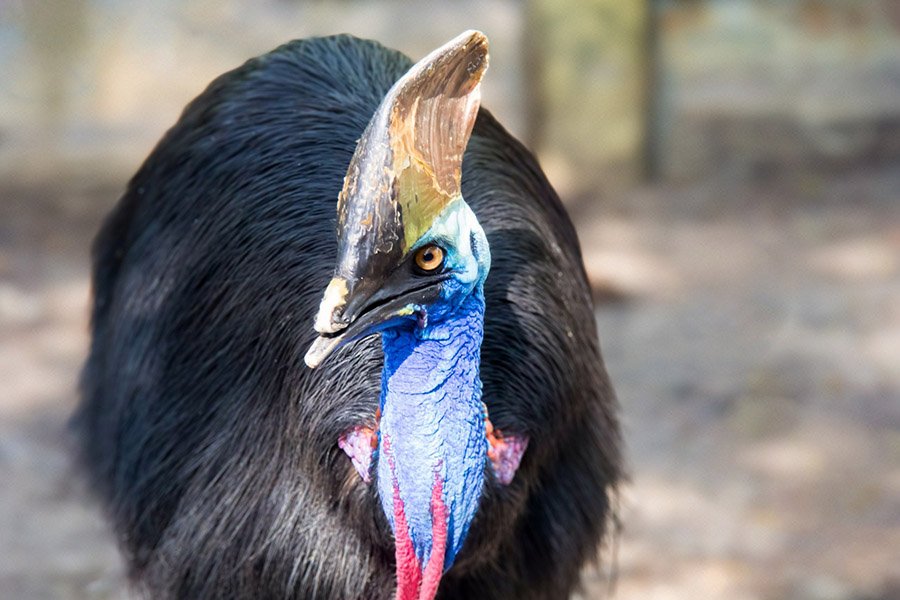
- Scientific name: Casuarius casuarius
- Type of animal: Bird
- Where found in the country: Rainforests of far north Queensland
- Conservation status: Endangered
The southern cassowary, also called the Australian cassowary, double-wattled cassowary, or two-wattled cassowary is a type of large black flightless bird native to parts of Australia, Papua New Guinea, and Indonesia. It is part of the ratite group, which includes other birds such as emus, ostriches, rheas, and kiwis. There are only three known living species of cassowary: the southern cassowary, the northern cassowary, and the dwarf cassowary.
★ Did you know? The southern cassowary can reach speeds of up to 50 km/h (31 mph) when running, which is quite impressive considering its large size and heavy build. These birds are important if you ever find yourself in the cassowary’s habitat, keeping a safe distance and avoiding disturbing or provoking.
8. Fitzroy River Turtle
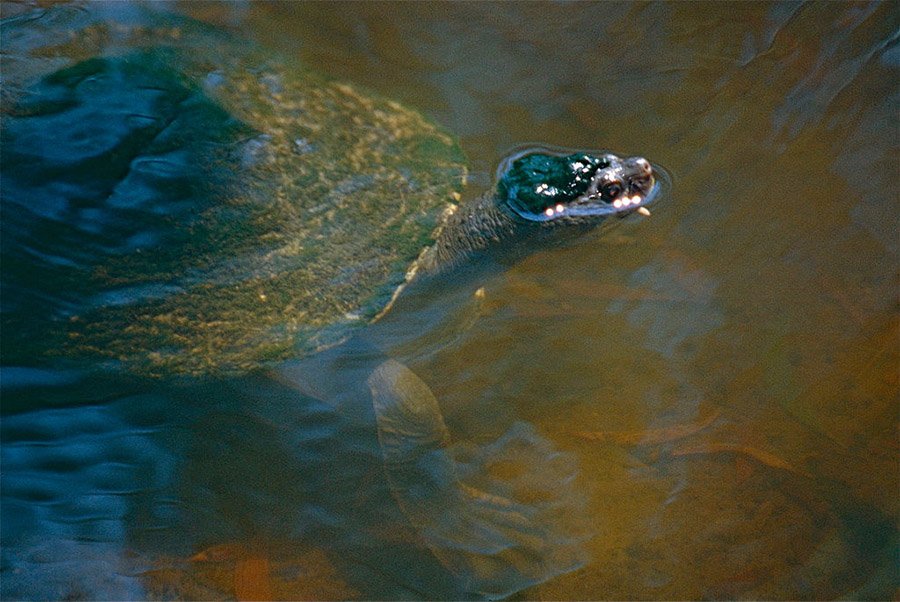
- Scientific name: Rheodytes leukops
- Type of animal: Reptile
- Where found in the country: Fitzroy River system
- Conservation status: Vulnerable
The Fitzroy River turtle, also known as the Bell’s Turtle, is a freshwater turtle endemic to Australia. It is found only in the Fitzroy River system in the Kimberley region of Western Australia.
The Fitzroy River turtle is one of Australia’s largest freshwater turtle species, with some individuals reaching a carapace length of over 40 centimeters. It is a unique and fascinating species that is highly valued by the Indigenous people of the Kimberley region, who have a special cultural and spiritual connection to these turtles.
However, like many other turtle species worldwide, the Fitzroy River turtle is threatened by habitat loss, predation, and other human activities.
★ Did you know? The Fitzroy River turtle is adapted to spending extended periods underwater and can hold its breath for several hours at a time.
9. Wombat
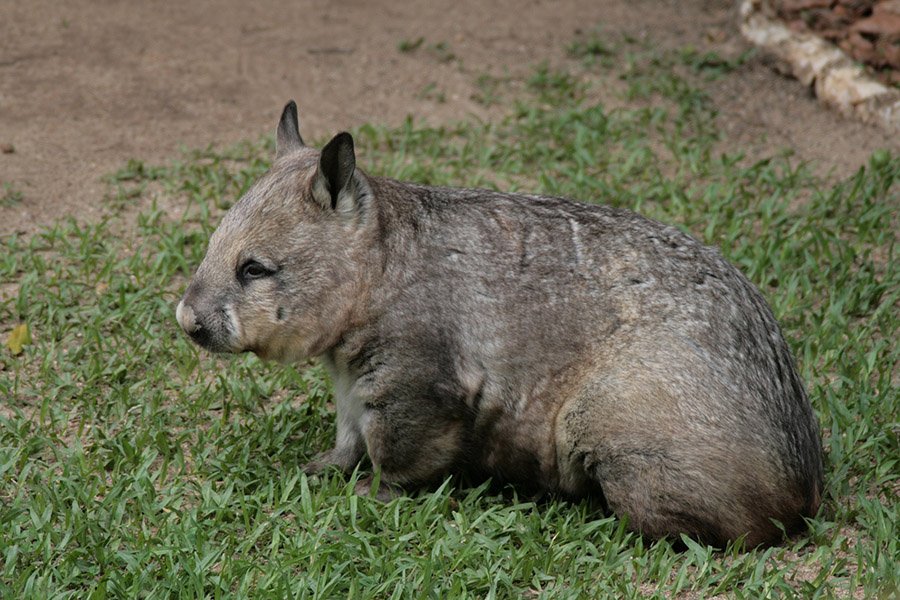
- Scientific name: family Vombatidae
- Type of animal: Mammal
- Where found in the country: States of New South Wales, Victoria, and Tasmania, as well as in some parts of South Australia
- Conservation status:
- Common wombat: Least Concern
- Northern hairy-nosed wombat: Critically Endangered
- Southern hairy-nosed wombat: Least Concern
Wombats are primarily ground-dwelling creatures native to Australia and can be found in various habitats throughout the country. There are three wombat species:
- The common wombat
- The southern hairy-nosed wombat
- The northern hairy-nosed wombat
The common wombat is found in southeastern Australia, including New South Wales, Victoria, and Tasmania, as well as in some parts of South Australia. The southern hairy-nosed wombat is found in a more restricted range in southern Australia, primarily in South Australia, Western Australia, and New South Wales. The northern hairy-nosed wombat, the most endangered of the three species, is found in a small area in central Queensland.
Wombats are an important part of the Australian ecosystem and are valued for their role in shaping and maintaining habitats through their digging and grazing activities.
★ Did you know? Wombats are known for their impressive burrowing abilities and are among the largest burrowing mammals in the world.
10. Platypus
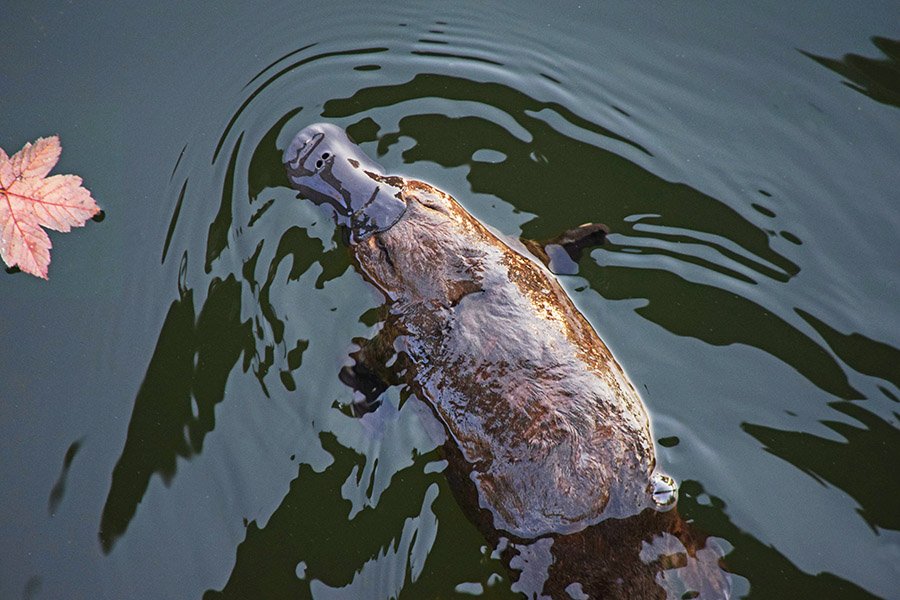
- Scientific name: Ornithorhynchus anatinus
- Type of animal: Mammal
- Where found in the country: Eastern coast of Queensland, New South Wales, Victoria, and Tasmania.
- Conservation status: Near Threatened
The platypus is a unique, egg-laying mammal found only in Australia. It has a duck-like bill, webbed feet, and a beaver-like tail, making it one of the most unusual animals in the world. It is a semi-aquatic animal that prefers freshwater habitats, such as rivers, streams, and ponds, where it can feed on small invertebrates and build its burrow along the banks.
The platypus is nocturnal and feeds on small invertebrates, using its bill to locate prey through electroreception. Platypuses are important to Australian culture and symbolize the country’s unique wildlife.
★ Did you know? Platypuses are venomous. Though their venom is not usually lethal to humans, it can cause severe pain, swelling, and other symptoms.
11. Thorny Devil Dragon

- Scientific name: Moloch horridus
- Type of animal: Reptile
- Where found in the country: Arid and semi-arid regions of Australia
- Conservation status: Least Concern
The thorny devil dragon is actually a species of lizard commonly known as the thorny devil. It is found in arid and semi-arid regions of Australia and is well adapted to its environment. Like all reptiles, thorny devils are ectothermic (cold-blooded) and rely on their environment to regulate their body temperature.
The thorny devil is known for its distinctive appearance, with a spiny body and a thorny crest on its head and back, which help it to blend in with its surroundings and deter predators. Despite its fearsome appearance, the thorny devil is harmless to humans and primarily feeds on ants.
★ Did you know? Thorny Devil can change its appearance to mimic its environment. The spines and thorns on its back help to break up its outline and further aid in camouflage.
12. Inland Taipan
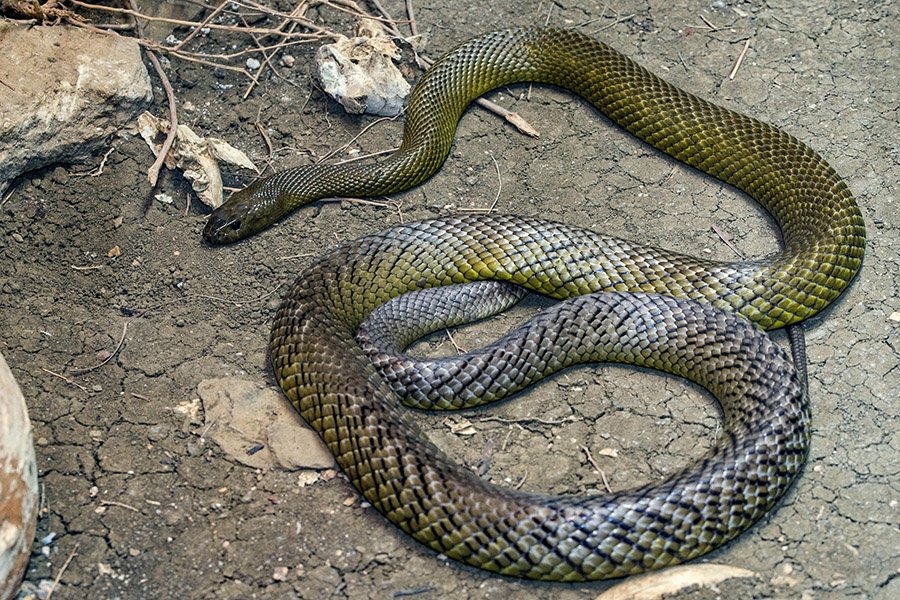
- Scientific name: Oxyuranus microlepidotus
- Type of animal: Reptile
- Where found in the country: Central and eastern Australia, primarily in the semi-arid and arid regions of Queensland, the Northern Territory, and Western Australia
- Conservation status: Least Concern
The inland taipan is considered one of the most venomous snakes in the world, with highly toxic venom that can cause severe illness or death in humans. Despite its vicious nature, the Inland Taipan is generally shy and reclusive and prefers to avoid encounters with humans whenever possible.
★ Did you know? If the inland taipan is cornered or threatened, it can deliver a series of rapid and highly venomous bites in self-defense.


